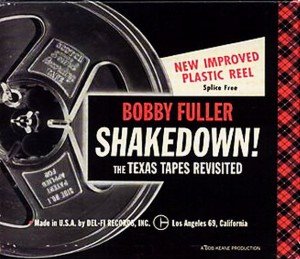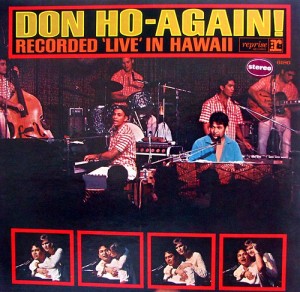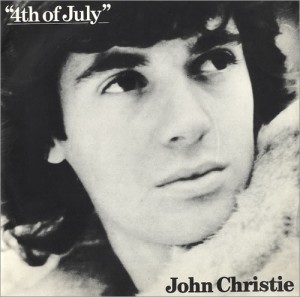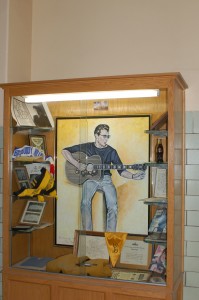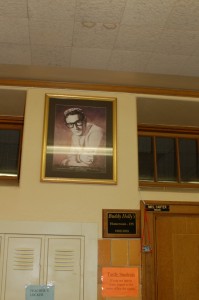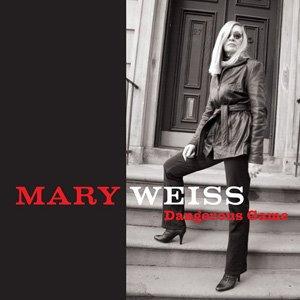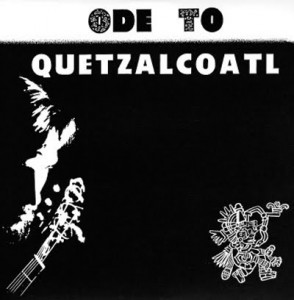The Beau Brummelstones (1966)
July 14th, 2007Song ID: Don Ho – “It Ain’t No Big Thing” (1966)
July 9th, 2007The Beau Brummels on Village of the Giants
July 8th, 2007The Beau Brummels tried to get all their band members a shot at singing lead a la moptops, but every song they tried it on would have sounded better with Sal Valentino’s distinctive voice. This second song in this clip is one of the few to feature Irish Brummel Dec Mulligan on lead just before he left the group.
Song ID: John Christie – “4th of July” (1974)
July 4th, 2007Rare little beauty written by Paul McCartney. This 45 is apparently John Christie’s only release and also the only thing I know about him.
Update (12/06/10): My “only release” pronouncement has been mercifully disproven by Herman Hamerpagt (see comments below). Christie, who was a discovery of Dave Clark (of the Dave Clark 5) actually put out an album called Relax in ’74 and had a hand in Clark’s ’80s musical Time. A record hunter’s work is never done.
John Christie – “4th of July” (1974)
Lubbock High School: A Quick Buddy Holly Tour
June 28th, 2007When we popped into the Lubbock High School administration office I was sure we’d be a tiresome sight – another batch of travellers who wanted to walk in the teenage Buddy Holly’s footsteps. On the contrary, Assistant Prinicipal Woody graciously showed us around, informing us that they get at most “one or two visitors a year.” One of the strangest aspects about visiting this old building is the realization that it’s still a fully functioning school in which Buddy was just another chattering student. This hits you before you even enter the building, when you first walk up to the front door and you read the historical marker which concerns itself only with the school’s construction history (finished in 1931) and its architectural features, such as its “North Italian Romanesque” design and its stately bell tower. References to Buddy: 0.
Reassuringly, Mr. Woody was well-versed enough in Buddyana to show us what we needed to see. First stop was the glass encased tribute in the main hall including photos, records, newspaper clippings, and a dusty letterman’s jacket. Next stop was his homeroom, which has a small plaque next to the door and a Buddy portrait above it, and just a few steps from this was the old choir room. The last stop, where we easily spent the most time, was the school auditorium, complete with the original wooden rock-hard seats and atmosphere to spare. This was not only where Buddy had performed a handful of times in talent shows he never won, but also where countless other historical notables passing through the Texas panhandle, such as Eleanor Roosevelt and Amelia Earhart, once stood.
Just a few days earlier I’d read a piece by writer Ron Carlson who had reminisced about his own ancient Junior High gym in the early sixties as having a unique smell – not stench – that was “for the ages.” I knew exactly what he meant as we walked back down the main hall and headed for the exit. Not only does this “for the ages” smell of so many old schools like Lubbock High have to do with years of polish and varnish in a material sense, but also in a more potent spiritual sense, perhaps. And even though I’ll always be in awe of Buddy, I realized as we were leaving that most of this school’s aura had very little to do with celebrity.
posted by Kim Simpson
Album ID: Mary Weiss, Dangerous Game (2007)
June 23rd, 2007Norton Records serves a kind of religious purpose, a rock ‘n’ roll church that’s always there proclaiming the Truth and while some of us may flop around irresponsibly and experiment with our listening habits and heed the words of false prophets and would-be hipsters and make bad musical decisions that sometimes make us feel guilty, we can always turn to Norton when it’s time to get back on track.
Recently Norton’s done us another benevolent service by getting a true rock ‘n’ roll goddess, the Shangri-Las’ lead singer Mary Weiss, back in the studio. She’s singing about boys again, even one who still lives with his mom (“I Just Missed You”), and her trademark heartbroken-but-still-tough voice sounds even tougher now. My favorite songs are three in a row toward the end: “Tell Me What You Want Me to Do,” which features a wildcat growl by Mary at the end of the bridge; “Heaven Only Knows,” an update of a Shangri-Las classic and which sounds truest to her sixties roots with its backup vocals and doubled up lead; and the airtight and irresistible “I Don’t Care.”
She’s teamed up on this album with Memphis rockers the Reigning Sound, whose Greg Cartwright wrote most of the songs. I’m not sure if Mary and Greg are an ideal matchup, but if they’re talking about a second album, may I request the following: 1) More recitations so we can hear more of Mary’s speaking voice, which all Shangri-La fans crave; 2) more sis-boom-bah in the wall-of-sound department; 3) more melodrama in the lyric department; and 4) less Americana-syndrome B-3 organ, which sounds too conventionally gospel for our favorite bad girl.
Mary Weiss – “Tell Me What You Want Me to Do”
Song ID: Louise Goffin – “Remember (Walking in the Sand)” (1979)
June 19th, 2007It peaked nationally at #43, but back home in Salt Lake, KCPX-AM used to play this track by Carole King and Gerry Goffin’s daughter – her only charting single – like it was a Top Ten smash. I never understood the appeal of this two-headed, minor chord melodrama and always groaned when it came on. Finally, by the end of the year, the single had run its course, but then along came Aerosmith in November with their own version of it, and my station promptly played it to death, much to my great discomfort (peaked at #67). I checked out a Shangri-Las record from the library a few years later and heard “Remember” in its proper melodramatic context, thereby helping me understand where those two cover versions were coming from, at least. Louise Goffin’s website: louisegoffin.com.
Louise Goffin – “Remember (Walking in the Sand)”
Sunday Service/Album ID: Dave Bixby
June 17th, 2007As you listen to this ultra-rare acoustic guitar/vocal LP which has been making the rounds on record-freak websites lately, you’ll at first feel touched by the enigmatic Bixby’s childlike, confessional lyrics and guileless delivery. He was once enslaved by drugs, he sings in the opener, but now Jesus has set him free. He should have listened to his mother, Bixby later tells us. She had tried to teach him about Jesus while he laughed at her, but she died before she could see him turn his life around and at once thank her for her efforts. But halfway through the record, your feelings of fondness morph into a certain kind of pity as its childlike qualities start to ring like submissiveness. And after you’ve listened to the whole thing straight through, having been hopelessly hypnotized by it, you’ll feel mostly unsettled. Then you’ll google him and discover that the record was likely midwifed by an intense Jesus cult he was involved in and you’ll start feeling outright scared of (and for) the guy.
The record has no year on it and no one seems to know for certain what it is. I’m guessing 1971, the year after the John Lennon/Plastic Ono Band album helped ease such earthy, nakedly confessional sounds into the pop music vernacular. (By the time the record’s lonely reverb and tape delay sink into your system, in fact, the JL/POB comparison is inescapable, as are thoughts of early Elvis sides like “Blue Moon.”) The year 1971 would also place it squarely in the middle of the all-pervasive Jesus-pop trend. Whatever the year, it’s a treasure in my book. (Absolutely no clue what the title’s misleading reference to Quetzalcoatl, the Aztec god, is all about.)
[See this update for more info on Bixby and the album: Ode to Quetzalcoatl redux.]
Dave Bixby – “666”
Chris Knight (Gruene Hall, Gruene, TX, 5/18/07)
May 18th, 20071 – If Phil Ochs used to write most of his songs by opening up the newspaper, most of the recent generation of Texas country rockers open up an atlas. Luckily, Chris Knight’s an adopted Texan from Kentucky who’s never felt the need to resort to that strategy.
2 – Knight, in fact, who will probably remind you of Steve Earle as you get to know his stuff, is a fine songwriter in his own right with a definite fixation on the gothic aspects of hillbilliana, and shows a healthy mistrust of certain Americana-syndrome production values on his Trailer Tapes album (dribbling B-3 organs, truck commercial Telecasters, overdrawn vocal drawls). Most Knight songs, in other words, leave behind a virtual corpse or two.
3 – Knight’s got a knowing look in his eye that contrasts pretty sharply with the blank frat faces that populate his shows and sing along to every word. Wonder what he’s thinkin’ up there.
4 – Knight’s hoarse Appalachian speaking voice is more grizzled and crusty and grammatically mangled than you’d expect after hearing his ability to turn a phrase in songs. (“I’ll bet y’all a bunch a tourist-ers,” he twice croaked to the Historic Gruene Hall crowd at historically low speed.) Authentic? Not necessarily an easy one because the shtick almost comes off as a put on, but I’m giving him the benefit of the doubt.

